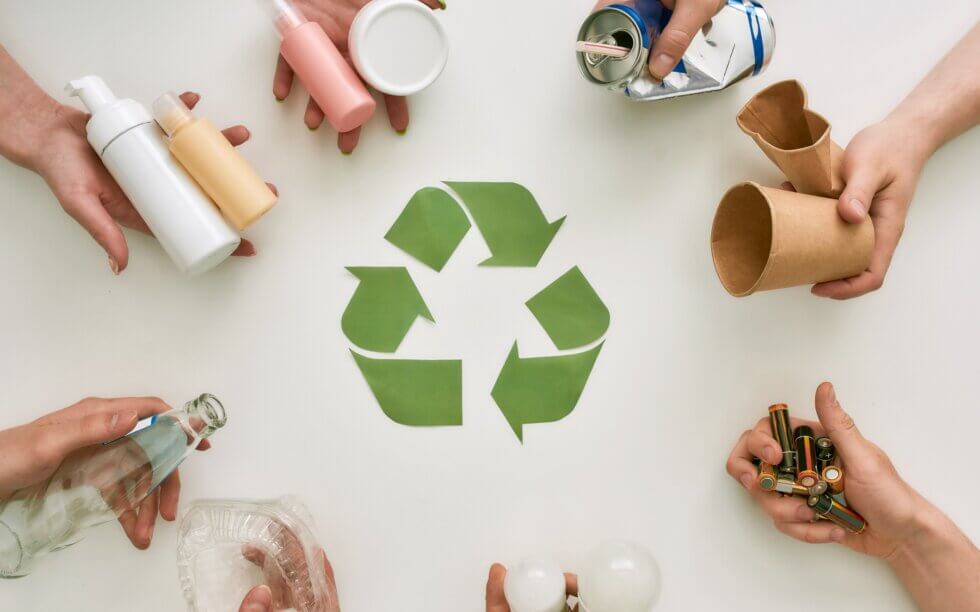
As consumer preferences change, it's important to adopt measures to adapt your company to these new standards. Among these, reverse logistics represents an excellent way to balance competitiveness with more sustainable practices in the business environment.
While the traditional version focuses on sending products to the public, the reverse version also facilitates the return of items for reuse, recycling, or proper disposal. These measures are closely linked to redesigned consumption practices and the implementation of ESG pillars.
With that in mind, we've put together a clear guide on how to bring these ideas to your business. Read on to find out!
The concept of reverse logistics refers to an instrument that supports economic and social development, characterized by actions, procedures, and resources that enable the collection and return of waste. Waste is reused in production cycles and can help reduce costs.
The creation of the National Solid Waste Policy (Law No. 12,305/2010) plays a significant role in the adoption of this method in companies' daily operations. This is because it establishes shared responsibility among companies, government, and consumers for waste reuse.
Under this new policy, businesses that work with various products, such as pesticides, batteries, and tires, must include measures in their plans to collect and dispose of these items.
Implementing reverse logistics in your company can generate a series of benefits, ranging from improved image to increased profitability with higher revenues and lower costs. Learn more below.
Second research published on g1, 81% Brazilian consumers express environmental concerns in their consumption habits. By adopting reverse logistics, you adapt your business to meet these new consumer demands.
This is because this technique significantly reduces environmental impacts by ensuring proper waste disposal. In other words, there is less soil and water contamination when disposal is done properly.
With recycling and reuse, there is also less need to extract natural resources, reducing environmental degradation. Not to mention that reverse logistics is inventive. circular economy by extending the life cycle of materials.
It's natural for companies to seek profit from their activities. Reverse logistics can also help here, as it provides benefits by reducing costs through the reuse of raw materials.
This eliminates the need to purchase new supplies and eliminates the need to invest in disposal measures. Since consumers are valuing this type of action, the effects aren't limited to costs.
This recognition can lead to more sales opportunities and increased customer loyalty, as they come to the store and appreciate such actions. It's also worth noting that, in some cases, it's possible to take advantage of tax incentives, reducing the amount paid in taxes.
With the National Solid Waste Policy came the responsibility to better utilize the life cycle of products. This also made it necessary to comply with this law to avoid fines, sanctions, and even operational impediments.
By incorporating reverse logistics into your company's activities, you can anticipate new requirements and implement an efficient structure that will allow you to comply with legislation more easily.
It is worth remembering that environmental agencies generally require periodic reports on waste disposal. However, with the application of logistics this process becomes easier and this will no longer be a concern.
To successfully implement this process in your company, it's advisable to adopt a series of practices that will simplify the methodology's adherence and operation. Learn more about each below.
The first step is to identify the main waste generated in your business's production process. Furthermore, determine how it can be reused or disposed of properly.
After this, you can establish an action plan that complies with environmental legislation and incorporates best practices from your company's industry. Consider setting goals to help with implementation.
Reducing a company's environmental impact by 10% over a 5-year period through reverse logistics, for example, is a good example. Remember that the plan must be clear and measurable to be easy to follow.
Some items can be returned to customers. However, for this to be implemented, accessible collection points are often required. There are several valid practices for this purpose, such as:
The easier and more advantageous the return of materials, the greater the adherence, making reverse logistics more efficient and sustainable.
In addition to having partners at collection points, relying on the support of companies specializing in recycling can be a great solution. Cooperatives and environmental agencies specialize in properly disposing of waste.
There are also service providers who operate in accordance with legislation and have an efficient process, which increases productivity of reverse logistics. To to work together with several actors in the production chain, the chances of strengthening this process and having more significant impacts are greater.
Closely monitoring results is important to adjust processes and ensure everything works better and better. The variables and indicators which can be related to the quantity of materials collected, used and discarded.
Investments in technology can simplify this monitoring, as well as increase transparency throughout the process, generating data that will aid in business decision-making.
As discussed in this content, it's clear that reverse logistics is essential for promoting the sustainability and competitiveness of companies. Therefore, in addition to deepening your knowledge, it's worth adopting the tips we've outlined here to implement new systems and face new challenges.
Want to keep up with new content about logistics? Then follow our page on Facebook, no Instagram, no LinkedIn and in the YouTube.